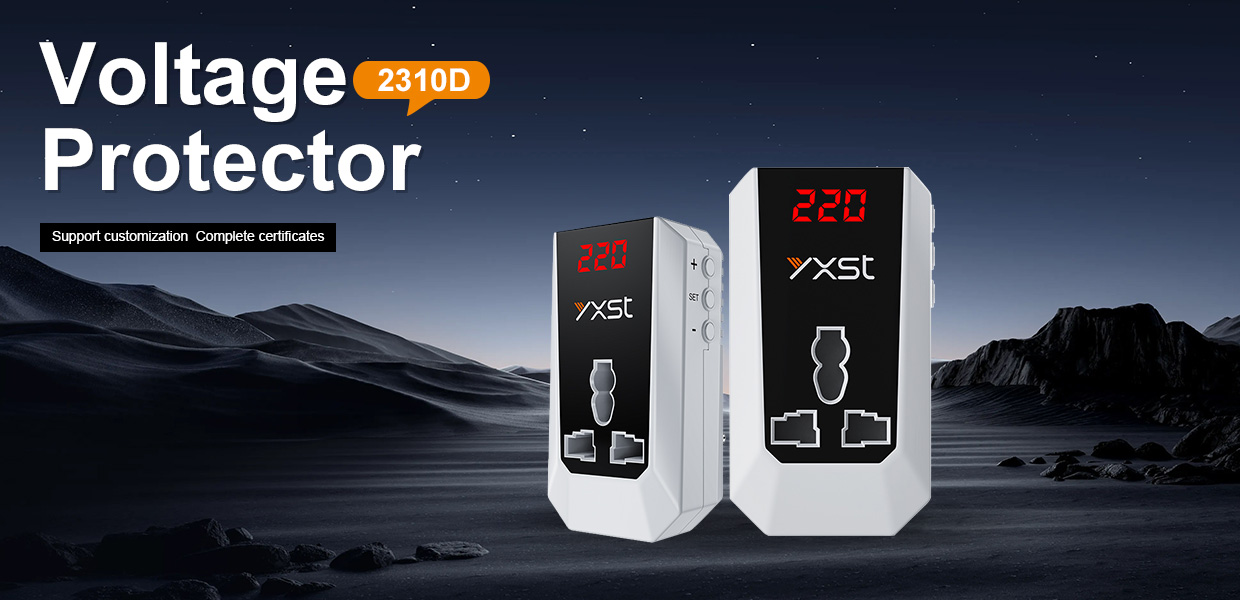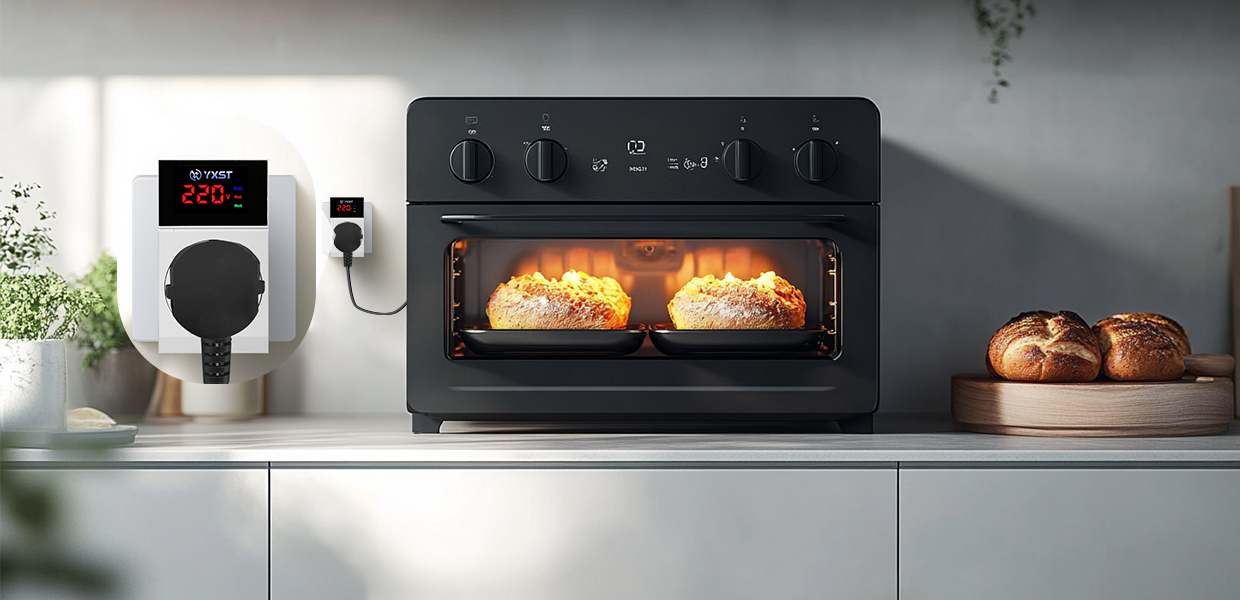Voltage fluctuations are a silent threat to home appliances, especially in regions with unstable power supplies (such as Pakistan, India, Bangladesh, and Myanmar). From sudden surges to unexpected drops, these irregularities can damage your refrigerator, air conditioner, or even your computer. Enter the digital voltage protector—a smart solution to shield your devices. But what exactly is it, and how does it differ from traditional surge protectors? This guide breaks down everything you need to know about protecting your home electronics, with practical tips for choosing, setting up, and maintaining the right device.
What Is Digital Voltage Protector?
Digital voltage protector is an advanced electrical device that monitors and stabilizes the voltage supplied to connected appliances. Unlike basic power strips, it uses microprocessors to detect over-voltage (when voltage exceeds safe limits) and under-voltage (when voltage drops too low) scenarios. When irregularities occur, it automatically cuts off the power supply to prevent damage. Think of it as a “smart bodyguard” for your coffee machine, television, laptops, or cookers and induction cookers.
How Does It Work?
Modern digital protectors analyze voltage levels in real-time through sensors. If the voltage crosses preset thresholds (e.g., below 140V or above 280V), the device instantly disconnects the circuit. Some models display real-time voltage data on an LCD screen, letting you monitor your home’s power health.

Digital Voltage Protector vs. Surge Protector: What’s the Difference?
Many confuse voltage protectors with surge protectors, but their roles differ significantly:
Surge Protector
→ Focuses on blocking sudden short-term spikes (like lightning strikes or power grid surges).
→ Uses metal oxide varistors (MOVs) to absorb excess energy.
→ Ideal for protecting devices like computers or gaming consoles from instant high-voltage damage.
Digital Voltage Protector
→ Guards against prolonged over-voltage or under-voltage issues (common in areas with unstable grids).
→ Continuously monitors and regulates voltage, not just spikes.
→ Best for appliances sensitive to gradual voltage changes, such as refrigerators or air conditioners.
Key Takeaway: Surge protectors handle brief spikes, while voltage protectors address sustained irregularities.
Why Your Home Needs a Digital Voltage Protector
→ Protects Expensive Appliances
A refrigerator’s compressor can fail if exposed to low voltage repeatedly. Similarly, air conditioners may overheat during voltage surges. A digital protector prevents these scenarios by cutting power before damage occurs.
→ Saves Money on Repairs
Replacing a burnt microwave or TV motherboard costs far more than investing in a voltage protector. For households in Pakistan, where voltage fluctuations are frequent, this device is a cost-effective safety net.
→ Enhances Appliance Lifespan
Stable voltage ensures motors, circuits, and other components operate within safe limits. Your appliances will last longer and perform efficiently.
→ Prevents Fire Hazards
Overheating from voltage surges can melt wires or ignite flammable materials. A protector reduces this risk by shutting off power during anomalies.

How to Choose the Best Digital Voltage Protector for Your Home
Step 1: Check Voltage Range Compatibility
Look for devices that match your local grid standards. In Pakistan, most homes require protectors rated for 220–240V. Modular designs (e.g., over/under voltage protectors) allow adjustable thresholds for customization.
Step 2: Prioritize Key Features
● Automatic Reconnect: Restores power once voltage stabilizes.
● Delay Timer: Prevents rapid on/off cycling (useful for refrigerators).
● LCD Display: Shows real-time voltage and status alerts.
● Load Capacity: Ensure it supports the wattage of your appliances.
Step 3: Compare brands and prices
When purchasing home appliances or voltage protection devices, the relationship between brand and price needs to be considered in combination with technical strength, functional adaptability, and market reputation.
Purchase suggestions:
Function priority: clarify the core needs (such as refrigerators need to focus on dual-cycle refrigeration, and voltage protectors need to match load capacity) to avoid paying for redundant functions.
Horizontal comparison: within the same price range, compare sales, user reviews (especially follow-up reviews), and energy efficiency levels. For example, first-level energy efficiency equipment is more energy-saving in long-term use.

How to Set Up a Digital Voltage Protector: A Step-by-Step Guide
The following is the setup method and installation guide for the digital voltage protector, covering the two mainstream methods of wiring and plug-and-play, to help users quickly complete the configuration and ensure the safe operation of the device.
★ Wiring installation (applicable to high-power devices)
Step 1: Power off preparation
※ Turn off the main power switch of the home, and use a test pen to verify that the line is without power before operating.
※ Prepare tools: screwdriver, wire stripper, voltage protector (such as YXST N021-220 model supports 30A load).
Step 2: Line connection
※ Input terminal (L-in/N-in):
Connect the live wire (red/brown) to L-in and the neutral wire (blue/black) to N-in. If it is three-phase electricity, the three-phase wires need to be connected accordingly.
※ Output terminal (L-out/N-out):
Connect to the main line of the appliance or distribution box to be protected (such as refrigerators, air conditioners, and other high-power devices).
Step 3: Parameter setting
→ Threshold adjustment:
※ Press the “Sel” button on the device to enter the setting mode, and use the “▲/▼” button to adjust the overvoltage (such as 260V) and Undervoltage (such as 160V) values.
→ Delay setting:
Set the automatic recovery time after power failure (such as 5s/210s) to avoid frequent start and stop damage to compressor equipment.
Step 4: Power-on test
Turn on the main power supply and observe whether the protector display shows the real-time voltage (such as 220V±10% is normal).
★ Plug and Play Installation (for single device protection)
Step 1: Device Selection
※ Choose models that support direct plug-in design (such as Yixing-2310D, which can be directly plugged into the socket).
Step 2: Quick Configuration
→ Socket Connection:
Plug the protector into the wall socket, and then connect the electrical plug to the protector output port (such as a TV, computer, etc.).
→ One-click Setting:
※ Short press the “Auto” button to enable the default threshold (overvoltage 240V/Undervoltage 180V).
※ Long press the “Set” button to enter the custom mode and adjust the parameters by + or -.
Through proper installation and setting, digital voltage protectors can effectively extend the life of home appliances and reduce maintenance costs caused by voltage anomalies. It is recommended to select an adaptation solution based on the household power environment and perform functional tests regularly.




